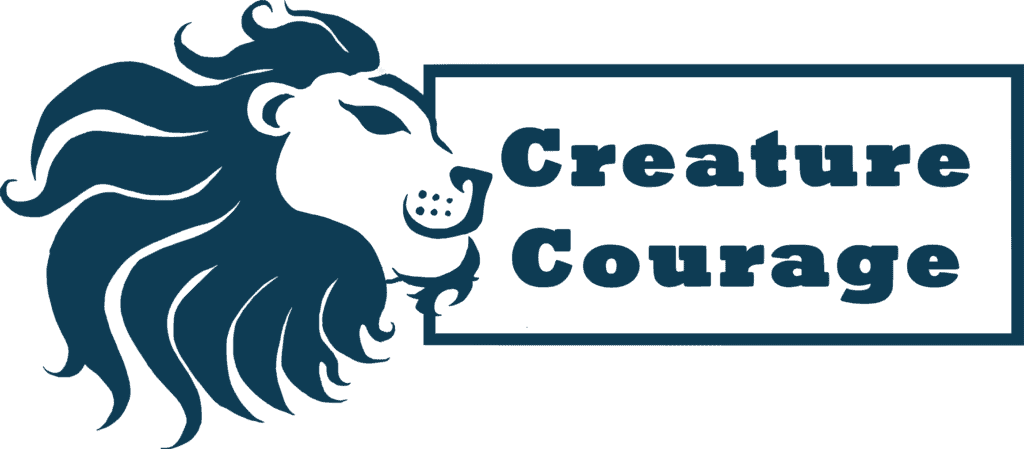Overcoming a Swan Phobia (cygnophobia)
Hopefully, when you think of swans you picture them gliding serenely across still waters, warm sun reflecting off the water and the gentle rhythm of trees swaying in the breeze. Swan’s have a particular grace that can entrance and beguile. This reflects their character beautifully. However, they can also provoke fear, especially during nesting season. When protecting their young they can rear up with their wings flared wide, often hissing at a perceived threat. I know this feeling well from walks with my dog – it’s fair to say that she didn’t quite see eye-to-eye with them. Swans can definitely be fearsome birds, and for those with a fear of swans, encounters can be terrifying.
The fear of swans is called cygnophobia and it is a specific type of bird fear (ornithophobia). Having this fear can turn a tranquil walk by the water into a nerve-wracking experience. However, it needn’t be that way. In this article, you’ll find out some fascinating facts about swans and learn how you can overcome your fear and live in peace with these majestic creatures.
Why Do You Have a Fear of Swans?
A phobia of swans, while less common than many other bird phobias, can still be intense and debilitating. Often people with a fear of swans also have a fear of geese. This is because the birds are similar in shape, size and attitude. Most animal phobias have a root fear of being out of control. Animals are very unpredictable after all. The fear of swans usually develops in childhood but adults can also develop the phobia. Some common causes are:
- A swan’s large size and powerful appearance can be intimidating
- Learnt behaviour from a parent or another care giver who has a fear of swans
- Aggressive displays are often misinterpreted and usually only occur during nesting season in the spring
- Urban legends abound regarding swans being strong enough to break your bones when provoked, which just simply isn’t true – unless you trip up over one!
- Past negative encounters can build up over time and create fears and phobias

For those affected, even the sight of a swan in the distance can trigger anxiety, which can lead to avoidance of lakes, rivers, and parks where swans might be present. This can really affect the quality of life for someone who has a fear of swans. So many enjoyable outdoor activities become limited or impossible. This can affect not only one’s personal mental health but family relationships, friendships and even professional life.
Common Signs and Symptoms of a Phobia of Swans
Here are some of the most common signs and symptoms of a fear of swans:
1. Intense Fear When Seeing Swans: Even from a distance or in photos, the mere sight of a swan can trigger an overwhelming sense of fear or panic.
2. Avoidance of Parks or Lakes: People with a swan phobia often go out of their way to avoid locations where swans are commonly found, such as ponds, rivers, or public gardens.
3. Rapid Heart Rate or Shaking: Physical symptoms like a racing heart, trembling, or sweating may occur when encountering a swan or even thinking about one.
4. Shortness of Breath or Dizziness: Being near a swan might cause breathlessness, light-headedness, or the feeling of being unable to move.
5. Nausea or Upset Stomach: Some individuals may feel sick or experience digestive discomfort when exposed to swans or environments where they are present.
6. Panic Attacks: In severe cases, a swan encounter may trigger a full-blown panic attack, including chest pain, confusion, or a fear of losing control.
7. Intrusive Thoughts or Nightmares About Swans: Recurring dreams or obsessive thoughts involving swans can be a psychological symptom of cygnophobia.
8. Difficulty Explaining the Fear: Many people with a swan phobia know their fear is irrational but still feel powerless to control it.
The Majestic World of Swans
For many people in the UK, swans evoke mixed feelings—graceful to watch, yet intimidating up close. However, understanding their nature can be the first step in overcoming fear. By learning about their lives, behaviours, and ecological value, we can begin to feel more compassion and even admiration for these elegant creatures.

Protected and Respected: The Historical Status of Swans in the UK
A Bird with Royal Roots: Swans, particularly the mute swan, have been protected by royal decree since the Middle Ages. In fact, they were once considered royal property, and harming one was a punishable offence. Today, they are safeguarded under the Wildlife and Countryside Act 1981, which makes it illegal to injure or disturb them, especially during nesting season.
Understanding this history not only highlights their cultural significance but also reminds us of the responsibility we share in preserving their wellbeing. Swans are not just birds; they’re a celebrated part of British heritage.
Intelligent, Loyal and Emotional: The Secret Social Lives of Swans
Swans Remember Kindness: Swans are far more intelligent than most people assume. They have strong memory skills and can recognise humans who have been kind—or unkind—to them. This means that positive interactions with swans can genuinely shape their future behaviour toward you and others.
Love and Loyalty in Nature: Swans are known for forming lifelong bonds. A mated pair often stays together for life, sharing in parenting responsibilities and territory defence. This commitment mirrors emotional connections that humans hold dear, making swans relatable and admirable. Observing a swan couple raise their young is a heart-warming experience that can soften fear into curiosity and compassion.
If you’ve ever watched swans gently shepherding their cygnets across a pond, you’ve seen just how nurturing and intelligent these birds really are.
Nature’s Gardeners: The Swan’s Role in Healthy Ecosystems
Keeping Waterways in Balance: Swans help manage aquatic environments by feeding on underwater plants. This natural pruning prevents overgrowth that could otherwise choke smaller species or create imbalance in freshwater habitats.
What many don’t realise is that swan droppings also fertilise pond and river banks, which supports a wide variety of other plant and animal life. Every part of a swan’s daily activity contributes to the ecosystem around it.
Indicators of Environmental Health
Swans are also known as “indicator species.” This means changes in their behaviour or numbers often reflect issues in the local environment. Their presence in a pond, lake, or river can be a strong sign of ecological health.
By respecting and protecting swans, we’re also safeguarding the larger habitats we all depend on. It’s a beautiful example of interconnectedness in nature.
Why Do Swans Attack?
Swans may appear aggressive at times, but their behaviour is often misunderstood. These elegant birds are highly territorial, especially during nesting season when they are fiercely protective of their young. What may seem like an unprovoked attack is usually a defensive reaction to a perceived threat. Swans are simply trying to keep their family safe, using their size and strength as a natural deterrent. Understanding swan behaviour helps us appreciate their instinct to protect rather than viewing them as hostile. By keeping a respectful distance, we can admire swans without causing them stress or fear.
Understanding Swan Behaviour Through the Seasons
Why Timing Matters: Knowing what swans do across the seasons can help reduce fear and encourage safe, positive interactions. Swans follow predictable annual patterns that reflect their natural instincts:
Spring (March–May): This is the nesting season. Swans are highly protective of their mates and cygnets. Keeping a respectful distance during this time prevents unwanted aggression.
Summer (June–August): Cygnets are growing, and swans remain attentive but are generally more relaxed. It’s a great time to observe them from afar.
Autumn (September–November): Young swans begin to gain independence and may leave the family group. You’ll often see them exploring solo or in sibling groups.
Winter (December–February): Swans focus on conserving energy and finding food. They’re less territorial, and often seen in flocks. It’s an ideal time to build positive associations, as they tend to be more approachable.
By observing from a respectful distance and offering appropriate food (such as leafy greens, oats, or defrosted peas—never bread), you’re helping them and creating a safer, more enjoyable experience for both sides.
Transforming Fear Into Fascination
Overcoming a fear of swans often begins with understanding and empathy. When you see swans not as aggressive threats but as intelligent, emotional, and ecologically important beings, your mindset begins to shift.
At Creature Courage, we help people make this shift with professional support, guided exposure, and psychological techniques that respect both the person and the animal. Many of our clients find that, once fear fades, a genuine interest—and even affection—for swans takes its place.
By learning to appreciate swans, you’re not only enriching your connection with nature but also reclaiming peace of mind in your outdoor experiences.
Coexisting with Swans
As we encroach further into wildlife habits, it’s crucial to find ways to coexist peacefully. We should respect nature and the space wildlife requires to flourish, especially during times such as nesting season. Swans just want to care for their children like any other living creature. They want to ensure their little ones make it to adulthood safe and strong. Surely, this is a concept we can all relate and agree upon.
Many human children can be cruel to birds, including swans, chasing them and even trying to kick them. Its important to teach our children to respect swans and other wildlife as valued living creatures. Moreover, interacting with wildlife should be actively encouraged as we need to learn how to coexist appropriately and learning about animal behaviour is essential to do that.
Feeding swans can seem like a positive way to interact with them, however we need to do this in the right way. Feeding swans bread or human food can cause them to miss out on vital nutrition they need. Better foods to feed them are things like oats, bird feed, lettuce, sweetcorn, peas carrots and potato peelings. Despite popular opinion, feeding swans bread will not cause them to explode but it has very little nutritional value and a swan’s digestion is not designed for bread.
Walking Dogs Near Swans
As we touched upon at the start of the article, encounters with swans can be particularly challenging if you are walking a dog. Hundreds of swans and their young are brutally injured or killed by dogs. Here are some tips for better safety of both dog and swan:
- Keep dogs on a leash when swans are present, ideally get to know the area so you can react before the dog bolts, barking at them. In fact, letting your dog chase or harass swans is illegal in the UK.
- Maintain a safe distance, especially during nesting season in the spring.
- Be extra cautious if you see cygnets. Parent swans are extremely protective.
- If a swan approaches aggressively, calmly move away. There’s no need to run, as the swan is almost definitely just protecting a nest or its young, and running might provoke chase behaviour.
- Consider alternative walking routes during peak nesting season if your usual path is near swan territories.
Overcoming Your Fear of Swans
Hopefully, you might be realising why you’ve had some bad experiences with swans in the past but if you’re struggling with a fear of swans, regardless, consider these strategies:
- Education: By learning about swan behaviour and biology you can better understand their actions, which can make them seem less threatening.
- Gradual Exposure: We extol this as a crucial step in overcoming your fear of swans and avoiding regression in the future – start by viewing swans from a safe distance, perhaps even through binoculars, however,
 you are comfortable to start. Then, gradually, decrease this distance as you become more comfortable. This is also a great way to learn about them and get used to their movements.
you are comfortable to start. Then, gradually, decrease this distance as you become more comfortable. This is also a great way to learn about them and get used to their movements. - Positive Associations: Focus on the beauty and grace of swans. Watch nature documentaries or engage with swan-themed art. Trying to reframe them as non-threatening creatures.
- Proper Behaviour: Learn how to act around swans. Avoid direct eye contact, don’t make sudden movements, and give them plenty of space. It sounds too straight-forward but your actions in the past might have provoked an unfavourable response from the swan and, hence, your fear of swans was born.
- Fake it until You make it: When you are around swans, send the right signals to your body to get into rest and digest instead of fight or flight. Relax your muscles, put your shoulders back in a confident pose, and smile! You will trick yourself into actually feeling confident! its a proven scientific technique.
- Professional Help: Of course, you can follow the steps above on your own (and we encourage you to do so), however, coaching can help you to achieve results much quicker. A complete breakthrough can even happen in as little as one day! Creature Courage specialise in helping people overcome animal phobias. We provide targeted strategies and support to help you conquer your fear, forever.
Creature Courage Can Help You Find Freedom
At Creature Courage, we take a holistic and compassionate approach to overcoming swan phobia, combining evidence-based techniques with personalised care. Our unique method blends cognitive behavioural therapy (CBT), NLP (neuro-linguistic programming), mindfulness practices, and exposure therapy in a safe, supportive environment. We work to reframe fearful thought patterns, reduce anxiety responses, and build positive associations with swans through gradual, controlled exposure.
Our sessions are tailored to each individual, ensuring fast and lasting results by addressing both the emotional and physical aspects of fear. With expert guidance and empowering techniques, clients often experience a powerful shift in mindset—transforming their fear into calm confidence in a surprisingly short time.
Overcoming a fear of swans can open up new experiences and appreciation for nature. Imagine being able to enjoy a peaceful walk by the lake you’ve been avoiding, being able to sit on one of the benches surrounding the water and watching as the cygnets take their first clumsy swim, or feel the sense of awe as you watch a swan’s powerful wings beat waves across the water as it takes flight.

Live Life Without the Fear Of Swans
Don’t let a fear of swans prevent you from enjoying the natural world around you. With understanding, patience, and the right support, you can transform your fear into fascination and feel a true sense of how we are supposed to share this wonderful planet. Creature Courage is here to help you on this journey, offering specialised therapy to overcome animal phobias.
Take the first step towards freedom from your fear. Reach out to Creature Courage today and start your journey towards peaceful coexistence with our remarkable birds. Soon, the sight of a swan could become a source of joy rather than fear, signalling not just the beauty of nature, but your own personal growth and triumph over phobia.
Remember, swans, like all wildlife, deserve our respect and protection. By understanding and appreciating these magnificent creatures, we can ensure their continued presence in our waterways for generations to come.



 you are comfortable to start. Then, gradually, decrease this distance as you become more comfortable. This is also a great way to learn about them and get used to their movements.
you are comfortable to start. Then, gradually, decrease this distance as you become more comfortable. This is also a great way to learn about them and get used to their movements.